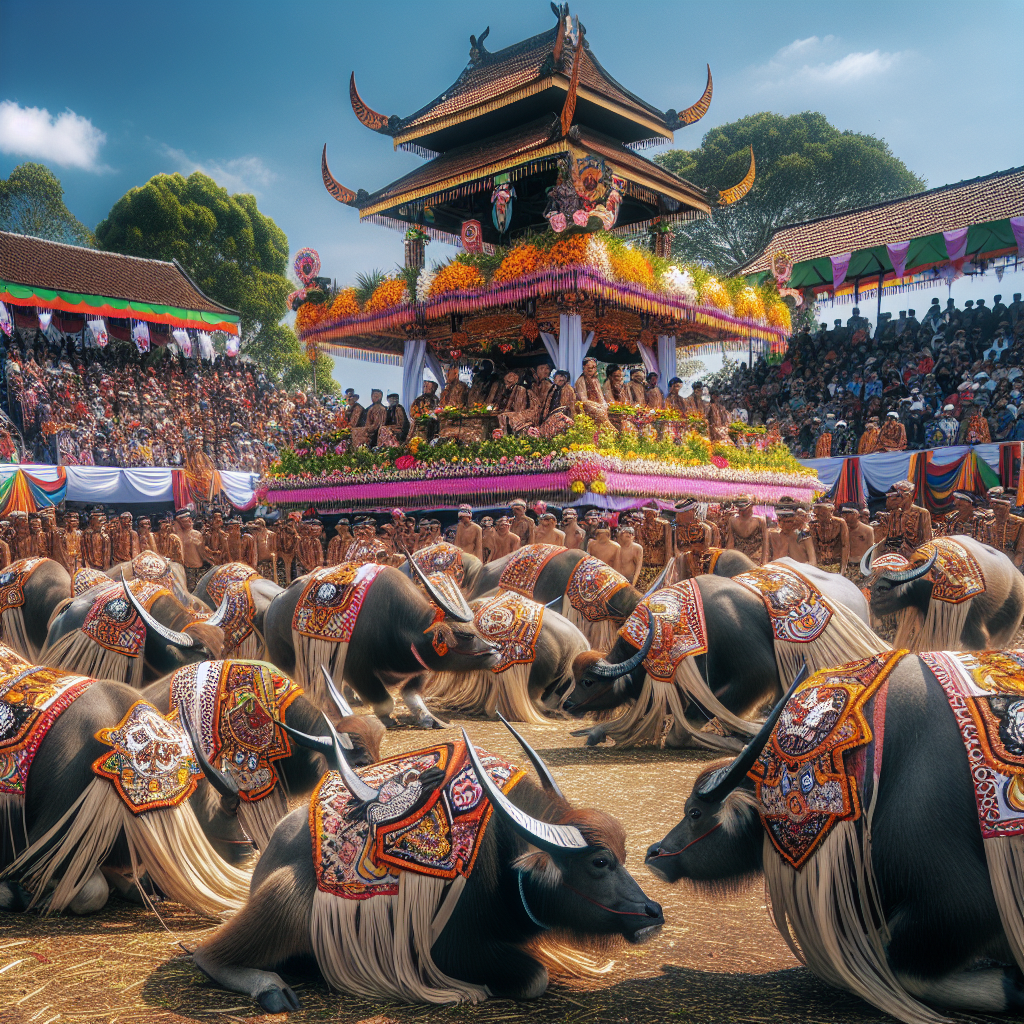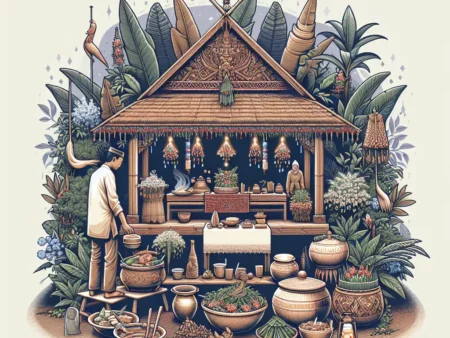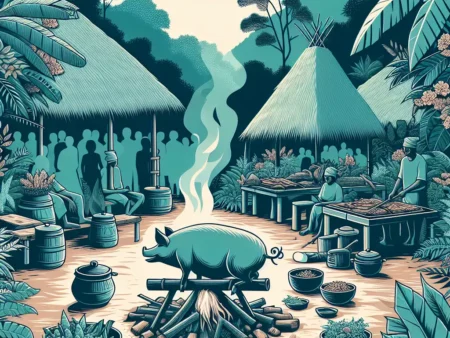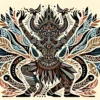Upacara Adat Kebo-keboan di Banyuwangi: Tradisi Penenangan Dewa.
Upacara Adat Kebo-keboan di Banyuwangi: Tradisi Penenangan Dewa
-
Table of Contents
Upacara Adat Kebo-keboan di Banyuwangi: Tradisi Penenangan Dewa

Introduction
Indonesia is a country rich in cultural diversity, with each region having its own unique traditions and customs. One such tradition is the Upacara Adat Kebo-keboan, a traditional ceremony held in Banyuwangi, East Java. This ceremony is a form of worship to appease the gods and seek their blessings for a bountiful harvest and protection from evil spirits. In this article, we will explore the significance of the Upacara Adat Kebo-keboan and its role in the cultural heritage of Banyuwangi.
The Origins of Upacara Adat Kebo-keboan
The Upacara Adat Kebo-keboan has its roots in ancient Javanese mythology and folklore. According to legend, there was once a powerful demon named Kebo Iwa who terrorized the people of Banyuwangi. The demon caused havoc in the village, destroying crops and spreading fear among the villagers. In order to appease Kebo Iwa and protect their village, the villagers devised a plan.
They created a giant effigy of a buffalo, known as “Kebo-keboan,” made from bamboo and other natural materials. The effigy was then paraded through the village, accompanied by traditional music and dance performances. The purpose of this ceremony was to distract and appease the demon, allowing the villagers to live in peace and harmony.
The Rituals and Symbolism
The Upacara Adat Kebo-keboan is a complex ceremony that involves various rituals and symbolic elements. The ceremony begins with the construction of the Kebo-keboan effigy, which is meticulously crafted by skilled artisans. The effigy is made to resemble a buffalo, with intricate details and decorations.
On the day of the ceremony, the Kebo-keboan effigy is carried by a group of strong men, known as “juru kunci,” who are believed to possess spiritual powers. The procession starts from the village temple and moves through the streets of Banyuwangi, with the villagers following behind, dressed in traditional attire.
Throughout the procession, the villagers chant prayers and perform traditional dances, accompanied by the sound of traditional musical instruments. The music and dance are believed to create a mystical atmosphere, attracting the attention of the gods and spirits.
At the end of the procession, the Kebo-keboan effigy is brought to a designated location, where it is set on fire. The burning of the effigy symbolizes the destruction of evil and the purification of the village. It is believed that the smoke from the burning effigy carries the prayers and wishes of the villagers to the gods, ensuring their blessings and protection.
The Significance of Upacara Adat Kebo-keboan
The Upacara Adat Kebo-keboan holds great significance for the people of Banyuwangi. It is not only a form of worship but also a way to preserve their cultural heritage and pass it on to future generations. The ceremony serves as a reminder of the village’s history and the struggles faced by its people.
Furthermore, the Upacara Adat Kebo-keboan plays a vital role in fostering a sense of community and unity among the villagers. The preparation and execution of the ceremony require the participation and cooperation of the entire community. It is a time when people come together, regardless of their social status or background, to celebrate their shared identity and beliefs.
Moreover, the ceremony serves as a tourist attraction, drawing visitors from all over the world who are eager to witness the unique cultural traditions of Banyuwangi. This not only promotes tourism in the region but also helps to generate income for the local economy.
The Challenges and Future of Upacara Adat Kebo-keboan
Despite its cultural significance, the Upacara Adat Kebo-keboan faces several challenges in the modern era. One of the main challenges is the dwindling number of skilled artisans who can create the Kebo-keboan effigy. The intricate craftsmanship required for the effigy is a dying art form, with fewer young people willing to learn and carry on the tradition.
Another challenge is the commercialization of the ceremony. In recent years, there has been an increase in the number of tourists attending the ceremony, leading to a shift in focus from its spiritual and cultural aspects to a more commercialized event. This has raised concerns among the villagers, who fear that the essence of the ceremony may be lost.
However, efforts are being made to address these challenges and ensure the preservation of the Upacara Adat Kebo-keboan. Local organizations and cultural institutions are working together to promote and educate the younger generation about the significance of the ceremony. Workshops and training programs are being conducted to encourage young artisans to learn the traditional craft of creating the Kebo-keboan effigy.
Conclusion
The Upacara Adat Kebo-keboan is a unique and vibrant tradition that holds immense cultural and historical significance for the people of Banyuwangi. It is a testament to the rich cultural heritage of Indonesia and the resilience of its people. Despite the challenges it faces, the ceremony continues to thrive, thanks to the efforts of the local community and the support of cultural enthusiasts.
Through the Upacara Adat Kebo-keboan, the people of Banyuwangi not only seek the blessings of the gods but also celebrate their shared identity and preserve their cultural heritage. It is a tradition that brings people together, fosters a sense of community, and showcases the beauty of Indonesian culture to the world.
As we look to the future, it is crucial that we continue to support and promote the Upacara Adat Kebo-keboan, ensuring its survival for generations to come. By doing so, we can preserve the cultural diversity of Indonesia and honor the traditions that have shaped our history and identity.







